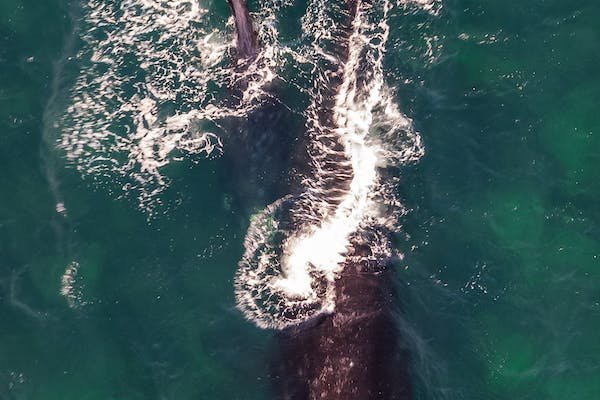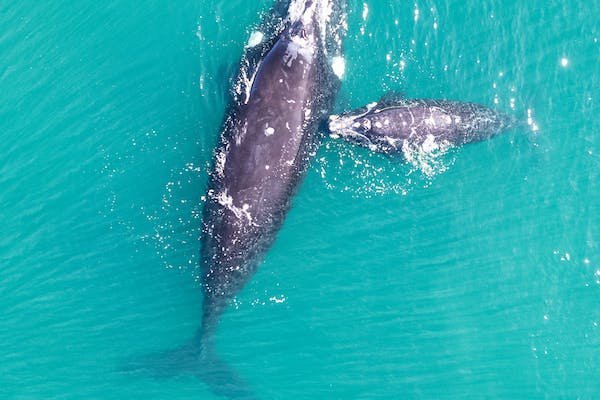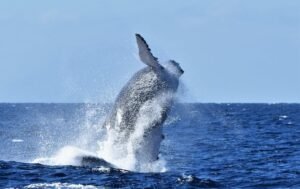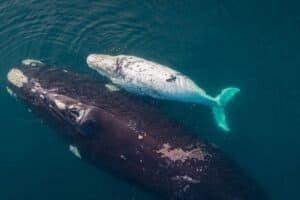Have you ever wondered How Many Bowhead Whales Are Left In World? According to recent studies, there are an estimated 10,000 bowhead whales left in the world. This may seem like a large number, but it is actually considered to be critically endangered.
The importance of bowhead whales goes beyond their ecological role within the marine ecosystem. They also hold cultural significance for many indigenous communities, who have depended on them for survival for centuries.
In addition, these creatures are a valuable source of information for researchers studying climate change and its impacts on Arctic and subarctic regions.
Furthermore, the preservation of endangered species like the bowhead whale is essential for maintaining biodiversity and preserving the delicate balance of our planet’s ecosystems.
Table of Contents
Bowhead whales: A Critically Endangered Species
The bowhead whale, also known as the Greenland right whale, is a majestic creature that can be found in Arctic and subarctic waters. However, due to intense hunting since the 1600s, their population has drastically decreased.
While this may seem like a large number, it is considered to be critically endangered. In fact, before the intense hunting began, there were believed to be as many as 50,000 bowhead whales in the world.
Bowhead whales are well-known for their enormous bow-shaped heads, which account for almost one-third of their total length. They are one of only three species of Arctic whales that are native all year. They’re tailor-made to overcome one of the bowheads’ primary obstacles: breathing through sea ice that’s more than 20 cm thick.
Aside from their enormous size (up to 100 tons!), bowhead whales are famous for their intense social group behaviors, which include slapping their flippers and tails and even breaking the water surface! They swim at a leisurely pace of three to five kilometers per hour while migrating, which is not unusual.
The top jaws of bowhead whales are covered with 250 to 350 keratinous baleen plates, identifying them as baleen whales. After consuming enormous quantities of water, they utilize these enormous vertical plates to separate their food. Every year, bowheads consume around 100 metric tons of food.
Today How Many Bowhead Whales Are Left In World?
The IUCN Red List estimates that there are around 10,000 mature bowhead whales left in the world, and their population is increasing.

Why are Bowhead whales being hunted heavily?
Despite being protected under international law, bowhead whales were heavily hunted in the past for their blubber and oil. This was primarily due to their high-fat content, which made them a valuable commodity for industries such as lamp oil production.
In more recent years, indigenous communities have been allowed limited hunting of bowhead whales for subsistence purposes. However, strict quotas are in place to ensure sustainable hunting practices.
Habitat of Bowhead whales:
Arctic and Subarctic Waters are the habitat of bowhead whales.
Bowhead whales primarily inhabit Arctic waters, including the Bering Sea, Chukchi Sea, Beaufort Sea, and Hudson Bay. Some populations can also be found in subarctic regions such as the Gulf of Alaska and the Canadian Maritimes.
These whales are highly migratory and travel long distances in search of food and breeding grounds. They are known to travel as far north as the Arctic Circle and as far south as the Gulf of Mexico.
Lifespan of bowhead whales:
Bowhead whales can live to be up to 200 years old, making them the longest-lived wild mammals on the planet.
Threats to Bowhead whales:
Climate Change and Human Activities
Despite being protected under international law, bowhead whales still face threats from climate change and human activities.
The changing climate is causing sea ice in their habitat to melt at an alarming rate, which can disrupt their natural behaviors and make it difficult for them to find food.
Additionally, human activities such as fishing and shipping can also impact the bowhead whale population. Entanglement in fishing gear and collisions with ships are common causes of injury or death for these whales.
Why bowhead whales are endangered?
The primary reason for the decline in the bowhead whale population is commercial hunting for their blubber and oil. This has been a practice since the 17th century, with even indigenous communities participating in the hunt as a means of survival.
Importance of preserving bowhead whales
Aside from their cultural and ecological significance, bowhead whales play a crucial role in maintaining the balance of their marine ecosystems. As filter feeders, they help to regulate plankton populations and contribute to the health of the ocean.
In addition, preserving these creatures also highlights our responsibility towards protecting the environment as a whole. Our actions have a direct impact on all species, and it is crucial that we make efforts towards sustainable living.
Although these are endangered, there is still hope for their survival. By continuing to educate ourselves and taking action towards their conservation, we can help ensure that these incredible creatures continue to thrive in our oceans.

Conservation efforts for bowhead whales:
In addition to tackling the threats posed by fast climate change and expanding Arctic development, WWF is attempting to locate and secure protection for vital bowhead whale habitat.
In 2009, WWF was instrumental in creating the Ninginganiq National Wildlife Area in Nunavut, the first bowhead whale sanctuary in the world. WWF gathered the data about how many bowhead whales are left in the world and worked to protect these species.
What can we do?
Here are some ways that we can contribute to the conservation of bowhead whales:
- Support organizations and initiatives dedicated to protecting the species.
- Participate in beach cleanups or other activities that help reduce ocean pollution.
- Reduce our carbon footprint to minimize the impact of climate change on their habitat.
- Educate ourselves and others about the importance of preserving endangered species and their habitats.
By taking these actions, we can make a positive impact towards preserving the bowhead whale population and ensuring a healthy marine ecosystem for generations to come.
Final Thoughts
While the current population of bowhead whales may seem promising, it is vital to continue conservation efforts to ensure their survival for future generations.
By addressing threats such as climate change, noise pollution, and accidental entanglement, we can help this majestic species thrive once again.
With proper conservation measures in place, we can ensure that the bowhead whale remains a thriving and iconic part of our oceans for years to come.
Read Also: How Many Javan Tigers Are Left In The World?



 YouTube
YouTube 


